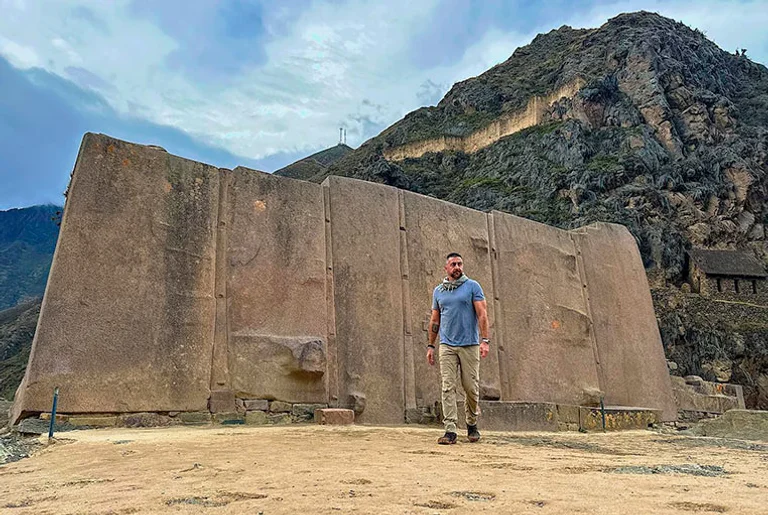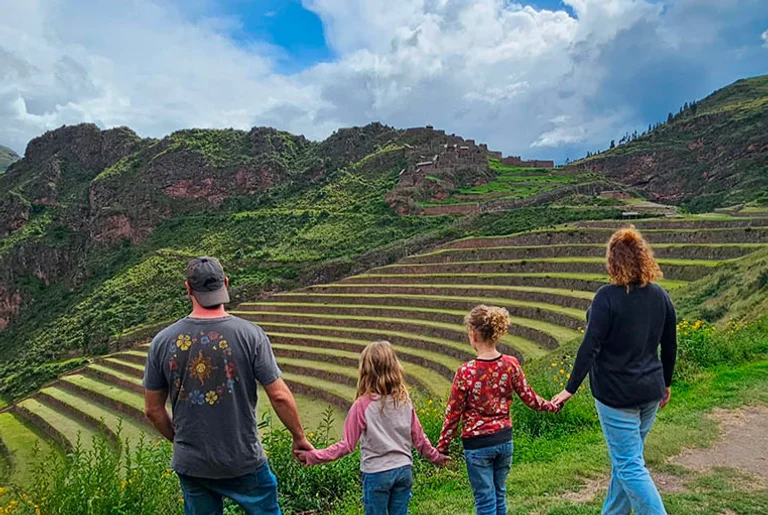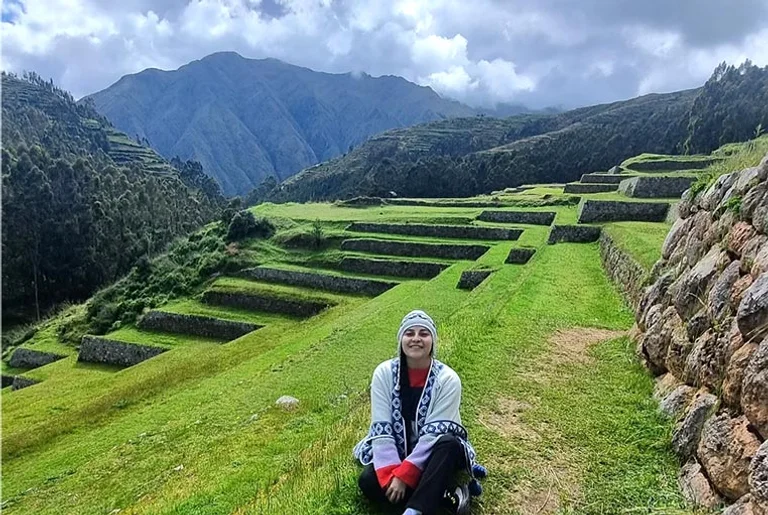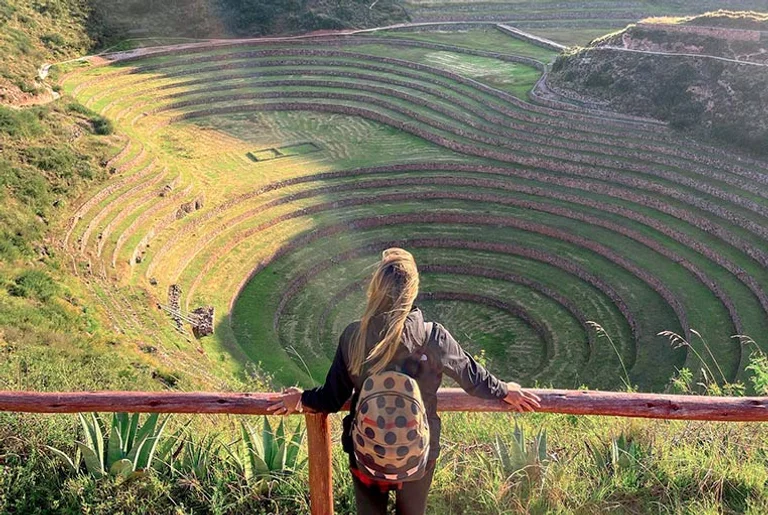
May 28, 2025
Attractions of Circuit 3 with the Cusco Tourist Ticket
The Cusco Circuit 3 Tourist Ticket opens the door to some of the most important archaeological sites near Cusco. It’s an opportunity to learn more about Inca history and culture in an organized and hassle-free way. If you want to know exactly what you can visit with this ticket, keep reading because you might find more than you expect.
Ollantaytambo Archaeological Park
Ollantaytambo is located about 80 kilometers northwest of Cusco, in the Sacred Valley of the Incas. It is one of the few sites where Inca buildings are still inhabited. The urban planning of the site maintains its original layout, with narrow streets and stone walls.
The archaeological site is made up of a series of terraces, enclosures, and temples spread across the mountainside. The most notable structure is the Temple of the Sun, built with large, tightly fitted stone blocks. This area is believed to have been used for ceremonial and military purposes.
During the Inca resistance, Ollantaytambo was used as a fortress by Manco Inca. From there, he managed to temporarily halt the advance of the Spanish conquistadors. The site’s strategic location allowed him to defend the entrance to the valley and control the passage into the jungle.
Entry time to Ollantaytambo: 7:00 a.m. to 6:00 p.m.

Note:
Traveler, if your plan is not to miss any of the places included in this ticket, one of your best options is to hire a travel agency that offers the “Sacred Valley” tour. They will also provide you with the necessary logistics for your trip, such as transportation, food and guide service.
Pisaq Archaeological Park
Pisac is an archaeological complex located on a mountain above the Urubamba Valley, approximately 30 kilometers from Cusco. The site consists of agricultural terraces, residential areas, and ceremonial structures. Its strategic location allowed for controlled access to the valley and facilitated agricultural work in steep terrain.
A notable feature of the site is its agricultural terraces, designed to conserve the soil and facilitate cultivation. These terraces also regulated temperature and water drainage. They also demonstrate the Inca’s ability to modify the landscape according to their agricultural needs.
Pisac also houses an Inca cemetery excavated into the hillside. It is one of the largest pre-Columbian cemeteries on the continent. The burial niches were carved directly into the rock and were used to bury people of different social ranks.
In addition to the archaeological site, the lower part of the city is home to the town of Pisac, where visitors can visit a craft market. Although the market is not included in the tourist ticket, it is often visited in conjunction with the archaeological site.
Check-in time to Pisaq: 7:00 a.m. to 6:00 p.m.

Chinchero Archaeological Park
The Chinchero archaeological site is located 30 kilometers northwest of Cusco, at 3,700 meters above sea level. It is believed that the palace of the Inca Túpac Yupanqui was located here. A colonial church was later built over these structures.
The site features a series of stone agricultural terraces. These terraces served for cultivation and soil conservation on sloping terrain. There are also well-preserved Inca walls in different parts of the site.
In addition to the archaeological site, Chinchero is known for its traditional textile production. There are centers where local families demonstrate the processes of wool weaving and dyeing using ancestral techniques.
Chinchero entry hours: 7:00 a.m. to 6:00 p.m.

The Cusco Tourist Comprehensive Ticket:
If you want a much broader experience, exploring the entire Cusco region and its main attractions, the ideal option is the comprehensive ticket. It takes you to sixteen sites in total, including archaeological sites, historical museums, and cultural centers. This way, you’ll have a more in-depth cultural immersion in your travel itinerary. Don’t miss this opportunity to discover all of Cusco’s most iconic sites.
Moray Archaeological Park
Moray is located 53 kilometers from Cusco and is characterized by its set of concentric terraces. These terraces descend in a circular pattern and create a different microclimate at each level. It is believed that this site was used as an agricultural experimentation center during the Inca period.
Moray’s design allowed for the study of the effects of altitude, humidity, and temperature on various crops. Temperature variations between levels could reach more than 10°C. This variability facilitated the domestication of plants and the adaptation of species to different regions of the Tahuantinsuyu.
Each terrace was built with a drainage system that prevented the accumulation of rainwater. The stones, layers of sand, and soil within the terraces maintained the stability of the land and allowed for efficient agricultural use. These features demonstrate the Inca’s technical knowledge of agricultural engineering.
Currently, the Moray site is open to the public and is part of Circuit 3 of the Cusco Tourist Ticket. The Maras Salt Mines are not included in this ticket, although many agencies combine both destinations.
Moray entry hours: 7:00 a.m. to 6:00 p.m.

Characteristics of the tourist attractions of circuit 3
|
Attractive
|
Main function
|
Highlighted Features
|
Check-in time
|
|---|---|---|---|
| Ollantaytambo | Inca military, agricultural and religious center | Terraces, unfinished temples, cyclopean architecture, still-inhabited Inca urban design | 07:00 – 18:00 |
| Pisac | Inca urban, agricultural and funerary center | Extensive terraces, pre-Hispanic cemetery, Inca architecture, panoramic views of the valley | 07:00 – 18:00 |
| Chinchero | Inca agricultural and religious center; current weaving center | Inca terraces, colonial temple on an Inca base, natural viewpoint, crafts market | 07:00 – 18:00 |
| Moray | Inca Experimental Agricultural Center | Concentric circular terraces, differentiated microclimates, agricultural laboratory hypothesis | 07:00 – 18:00 |
Frequently Asked Questions
1. What is the best way to get to each of these destinations from Cusco?
To begin, you should know that these places are not close to each other, so you will definitely have to hire a private transportation service to take you to each of them.
2. How long does it take to visit Pisac and its craft market?
If you go on your own, the time will depend on you, but if you book with a travel agency, the entire tour will take approximately 1 to 1.5 hours. This will be more than enough time to explore the archaeological site and its craft market.
3. Is it possible to combine a visit to Ollantaytambo with Moray and Chinchero in a single day?
Of course. You have two options: hire private transportation to take you to all these places or hire a travel agency to take you on a tour of the Sacred Valley. Whichever option you choose, it will take you almost a full day to visit these places.
4. What clothing recommendations are there for these sites considering the weather?
It’s recommended to wear clothing that allows you to move comfortably and footwear with good traction, such as trekking shoes. Why? These archaeological sites have stone steps, so it’s important to have good mobility and stability while walking.
5. Where can I buy authentic handicrafts in Pisac or Chinchero?
You can find authentic handicrafts in Chinchero, especially those made with textiles. This place still preserves the living traditions of making clothing, blankets, and other items using traditional methods.
6. How crowded are these places during peak season?
Traveler, whether it’s high or low season, these places are usually quite crowded. It’s hard to find them empty or uncrowded, as this route is highly visited by most travelers and has become an almost obligatory stop for those visiting the area.
7. Are there places to eat near Ollantaytambo or Pisac?
Of course! If you go on your own, you’ll find a variety of restaurants of all categories, available for every type of traveler. If you go with a travel agency, they’ll usually take you to buffet-style restaurants, which are also very good and offer a wide variety of options.
8. Is it recommended to hire a guide or is it possible to explore them on your own?
It’s not mandatory to have a guide, but keep in mind that each of these places holds stories and mysteries around every corner. Therefore, having a tour guide is highly recommended, as it will make your visit much more interesting and enjoyable.
9. How long does it take to walk around the Ollantaytambo fortress?
Whether it’s Ollantaytambo or another of the sites included in the Circuit 3 Tourist Ticket, walking the entire area will take you between 30 and 50 minutes at a brisk pace. We recommend taking it slow; you don’t want to tire yourself out too quickly, do you?
10. What precautions should be taken when visiting open-air archaeological sites?
When visiting outdoor archaeological sites, walk carefully on areas with stones or steps to avoid slipping, avoid touching the structures to help preserve them, bring water to stay hydrated, and above all, always follow the instructions of the staff or guides to ensure a safe and respectful visit.